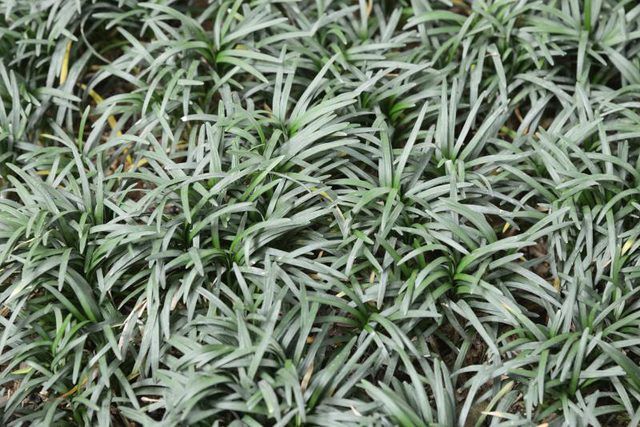Bulbs
Flower Basics
Flower Beds & Specialty Gardens
Flower Garden
Garden Furniture
Garden Gnomes
Garden Seeds
Garden Sheds
Garden Statues
Garden Tools & Supplies
Gardening Basics
Green & Organic
Groundcovers & Vines
Growing Annuals
Growing Basil
Growing Beans
Growing Berries
Growing Blueberries
Growing Cactus
Growing Corn
Growing Cotton
Growing Edibles
Growing Flowers
Growing Garlic
Growing Grapes
Growing Grass
Growing Herbs
Growing Jasmine
Growing Mint
Growing Mushrooms
Orchids
Growing Peanuts
Growing Perennials
Growing Plants
Growing Rosemary
Growing Roses
Growing Strawberries
Growing Sunflowers
Growing Thyme
Growing Tomatoes
Growing Tulips
Growing Vegetables
Herb Basics
Herb Garden
Indoor Growing
Landscaping Basics
Landscaping Patios
Landscaping Plants
Landscaping Shrubs
Landscaping Trees
Landscaping Walks & Pathways
Lawn Basics
Lawn Maintenance
Lawn Mowers
Lawn Ornaments
Lawn Planting
Lawn Tools
Outdoor Growing
Overall Landscape Planning
Pests, Weeds & Problems
Plant Basics
Rock Garden
Rose Garden
Shrubs
Soil
Specialty Gardens
Trees
Vegetable Garden
Yard Maintenance
How to Grow Black Mondo Grass
How to Grow Black Mondo Grass. Black mondo grass (Ophiopogon planiscapus "Nigrescens") boosts garden glamour with dramatic, near-black leaves. Not a true grass, this easy-care perennial excels in singles or small groupings. Hardy in U.S. Department of Agriculture plant hardiness zones 6 through 10, black mondo grass lacks the vigor for...

Black mondo grass (Ophiopogon planiscapus "Nigrescens") boosts garden glamour with dramatic, near-black leaves. Not a true grass, this easy-care perennial excels in singles or small groupings. Hardy in U.S. Department of Agriculture plant hardiness zones 6 through 10, black mondo grass lacks the vigor for large-scale projects. The low-maintenance beauty provides a striking complement to more intimate garden settings.
Sun, Soil and Color
Black mondo grass favors partially shaded areas with four to six hours of direct sun each day. Established plants thrive in full shade in hot, intense climates, but they tolerate full sun in cooler areas. The fleshy, tuberous roots prefer moisture-retentive, well-draining soil. Poor drainage leads to crown rot and related fungal disease. Sun and shade play on black mondo's color and size. Normally 6 to 12 inches tall and wide, the plant responds to sun with short, compact growth. Shade triggers longer leaves. The more sun the plant gets, the deeper and darker its blackness becomes. The leaves hold their color in shade, but shadows overtake them and lessen their impact.
Growth and Spacing
Black mondo grass doesn't spread like some of its robust, fast-moving relatives. The plant grows slowly. Newly planted black mondo may take several years to show discernible growth. Once established, the plant stays small and well-behaved. Used for edging, accents or small areas, it excels. Allow 6 to 12 inches of space per plant in standard garden settings. For dense coverage, space black mondo grass at 6- to 8-inch intervals. Tiny, mauve-pink flowers appear in late summer, followed by blue-black berries, but the 1/4-inch-wide leaves usually hide the blooms. Black mondo grass makes a beautiful addition to mixed containers, especially when paired with plants with gold or chartreuse foliage.
Preparation and Fertilizer
Even when grouped as ground cover, black mondo grass won't choke out weeds like its more-aggressive cousins. Prepare your site before planting, and eliminate weeds from the areas. Weeds compete for water and nutrients, slowing black mondo's growth even more, and weeding is difficult in large plantings. Black mondo is sensitive to chemical injury from herbicides and fast-acting, inorganic fertilizers. Incorporate 3 to 4 inches of organic compost to a depth of 6 inches before you plant. This provides slow-release, balanced nutrition. Add a 1/2-inch layer of compost each spring, and that's all the fertilizer black mondo grass needs.
Moisture and Maintenance
Established mondo grass withstands dry soil, but the plant flourishes with moderate, consistent watering. For the best color and size, supplement rainfall to keep the soil evenly moist. Depending on winter conditions, black mondo's evergreen foliage may become tattered. Prune the plant back to one-third its height before new growth begins in spring. Use hedging shears, and sterilize the blades with household disinfectant before and after your work. If you wish, mow an established planting of mondo grass. Set lawn mower blades at the highest setting, and be careful not to damage the plants' crowns.